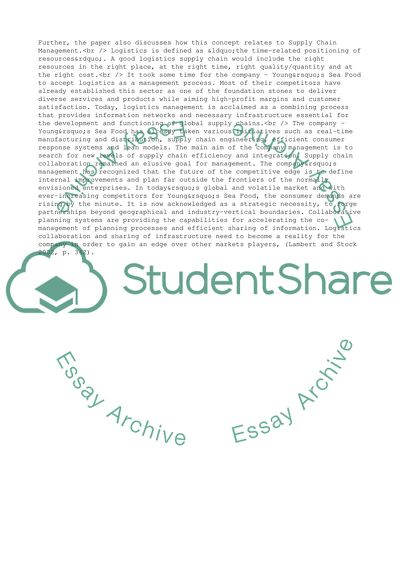Cite this document
(Competitive Advantage of Youngs Seafood and Grimsby Case Study, n.d.)
Competitive Advantage of Youngs Seafood and Grimsby Case Study. Retrieved from https://studentshare.org/business/1561215-evaluate-the-effectiveness-of-logistics-management-as-a-method-of-gaining-competative-advantage-within-youngs-seafood-grimsby-and-how-this-relates-to-the-wider-supply-chain
Competitive Advantage of Youngs Seafood and Grimsby Case Study. Retrieved from https://studentshare.org/business/1561215-evaluate-the-effectiveness-of-logistics-management-as-a-method-of-gaining-competative-advantage-within-youngs-seafood-grimsby-and-how-this-relates-to-the-wider-supply-chain
(Competitive Advantage of Youngs Seafood and Grimsby Case Study)
Competitive Advantage of Youngs Seafood and Grimsby Case Study. https://studentshare.org/business/1561215-evaluate-the-effectiveness-of-logistics-management-as-a-method-of-gaining-competative-advantage-within-youngs-seafood-grimsby-and-how-this-relates-to-the-wider-supply-chain.
Competitive Advantage of Youngs Seafood and Grimsby Case Study. https://studentshare.org/business/1561215-evaluate-the-effectiveness-of-logistics-management-as-a-method-of-gaining-competative-advantage-within-youngs-seafood-grimsby-and-how-this-relates-to-the-wider-supply-chain.
“Competitive Advantage of Youngs Seafood and Grimsby Case Study”. https://studentshare.org/business/1561215-evaluate-the-effectiveness-of-logistics-management-as-a-method-of-gaining-competative-advantage-within-youngs-seafood-grimsby-and-how-this-relates-to-the-wider-supply-chain.


